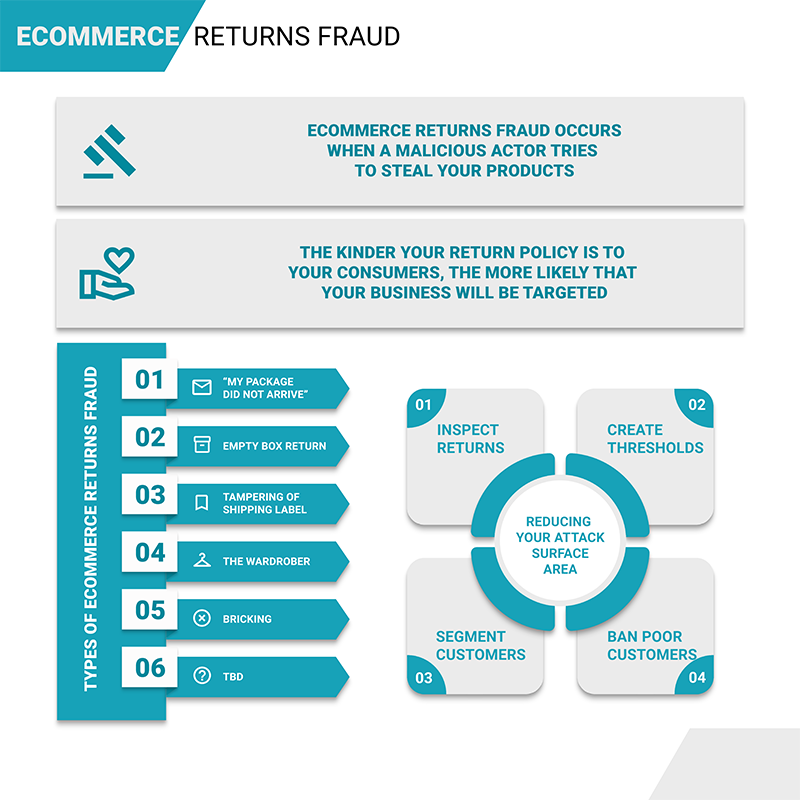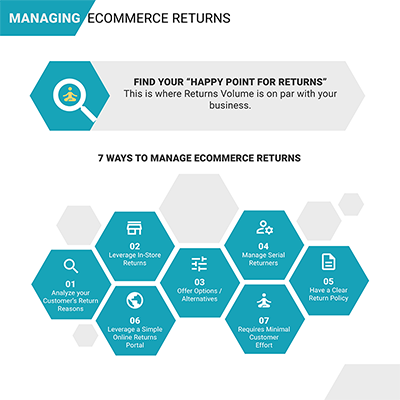
eCommerce Returns Fraud
How to get ahead of the fraudsters.
By Commerce Returns
Published on June 29, 2021 - 3 Min Read
What is eCommerce Return Fraud

eCommerce Return Fraud occurs when a malicious actor tries to steal your products.
Although the approach for accomplishing this can be different, the end goal is always the same: The fraudster tries to keep your products for free.
This type of fraud can be carried out in one of many ways, and fraudsters are always finding new ways to engage in malicious activities.
What factors make you vulnerable to eCommerce Return Fraud

Ultimately, the kinder your return policy is to your consumers, the more likely that your business will be targeted.
Common types of eCommerce Return Fraud

- My Package did not arrive
- A fraudster tries to pretend like they did not receive the parcel, and demands a refund.
- The fraudster keeps the money and the product.
- Empty Box Return
- This scheme takes advantage of an automated refund process where some businesses choose to issue a refund the moment the parcel is handed off to a courier.
- The fraudster uses the return label provided and affixes it to an empty box.
- A fraudster receives a full refund the moment they give the empty box to the carrier.
- The fraudster keeps the money and the product.
- Empty Box Return + Tampering of shipping label
- More sophisticated than an Empty Box Scheme.
- The blueprint for "Empty Box Return" Fraud is followed. The one addition is that the fraudster also tampers the carrier label. This tampering causes the package delivery to get significantly delayed.
- This gives the Fraudster the appearance that the package is lost.
- The fraudster demands a refund stating something like "Its not my fault the carrier lost it, I have been waiting for weeks now!"
- The online store spends a while working with the carrier before realizing what has happened.
- The fraudster keeps the money and the product.
- The Wardrober
- The Wardrober uses the item once and then returns it.
- Such customers typically do so because they are unable to afford the item.
- Bricking Fraud
- A fraudster removes valuable items out of the product, reseals the product, and ships it back.
- In the case of fashion, the genuine item is commonly replaced with a counterfeit.
- The item then goes on to be resold to the next unsuspecting customer who buys either a broken, or an entirely fake product.
- TBD
- Fraudsters are always actively looking for new ways to defraud vulnerable businesses!
How to combat eCommerce Returns Fraud

The most effective way to combat eCommerce Returns Fraud is to decrease your attack surface area.
The important thing to point out is that 99% of your shoppers will be honest, so what you don't want to do is implement a policy that will hurt the majority.
Keeping that in mind, the most effective way to combat eCommerce Returns Fraud is to decrease your attack surface area. This can be accomplished by employing any of the below 4 points.
- Do not issue returns until you have received and inspected the goods.
- Any attempts to ship back counterfeit, empty box returns, or worn items will get flagged.
- If the product has been tampered with, no refund is issued.
- Continue issuing automatic refunds as long as they are below a threshold.
- Find out your average order price
- Anything over and above the average order price should not qualify for a quick refund
- Only issue automatic returns to customers with a good purchase history.
- If you have good, recurring customer history - you can reward this customer by issuing automated returns.
- New customers, or repeat offenders are subjected to more scrutiny.
- Ban poor customers.
- Amazon has set this bar by actively banning customers who engage in wardrobing.
Questions?
If you would like to continue this discussion, feel free to reach out to us directly at [email protected]

